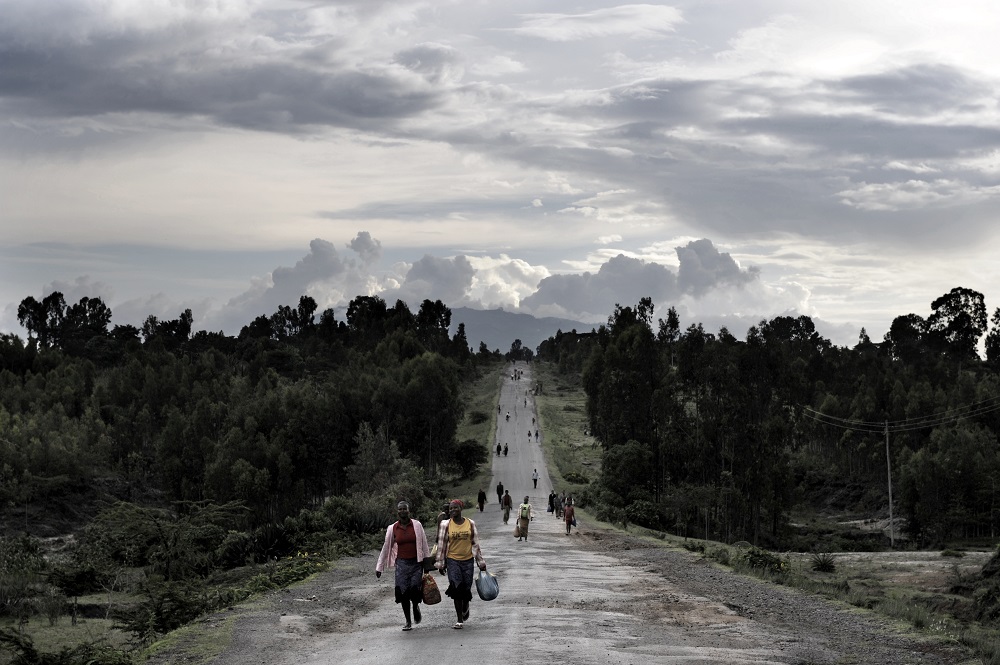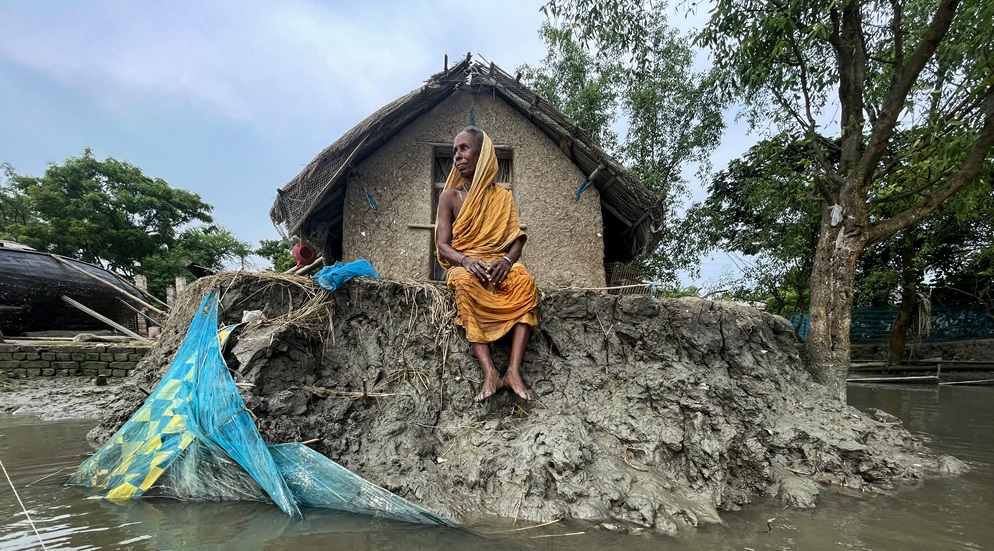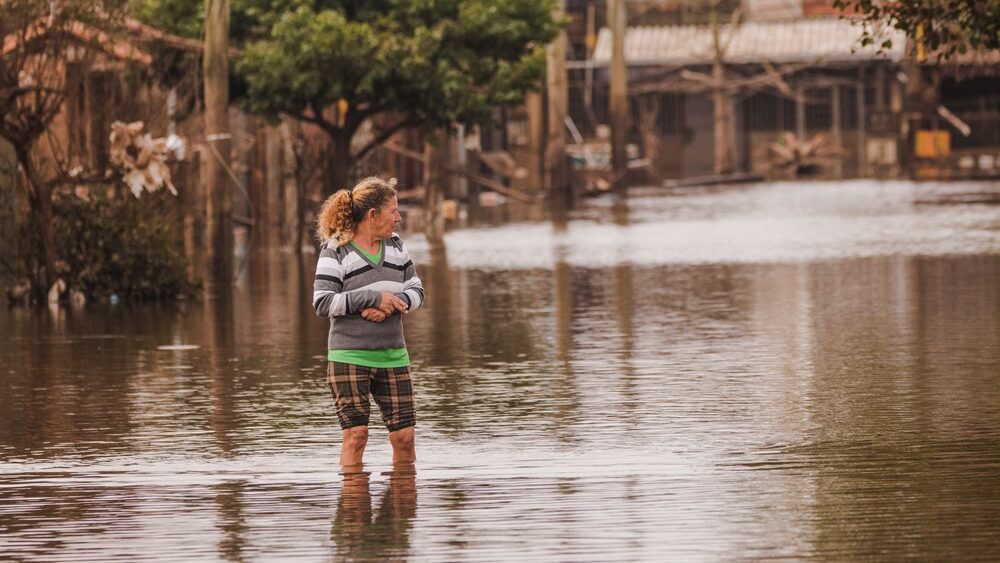Internal Displacement in the Context of Disasters and the Adverse Effects of Climate Change
Submission to the High-Level Panel on Internal Displacement by the Envoy of the Chair of the Platform on Disaster Displacement
Background
Following its inaugural meeting, the High-Level Panel on Internal Displacement (HLP) issued a call for written submissions, aiming to generate bold, creative and practical ideas. With a revised deadline set for 8 May 2020, the submissions should feed into the Panel’s work towards improved prevention, response, and solutions to internal displacement. The call for submissions was sent to Member States in Geneva and New York, to UN agencies, NGO networks, Initiatives, Human Rights organizations, Academics, and Think Tanks.
You can read the Executive Summary of the Submission by the Envoy of the Chair of the Platform on Disaster Displacement below, or download the full submission here.
Executive Summary of the Submission by the Envoy of the Chair of the Platform on Disaster Displacement
This submission by the Envoy of the Chair of the Platform on Disaster Displacement (PDD) to the HLP discusses issues related to internal displacement in the context of sudden and slow-onset disasters triggered by natural hazards, including the adverse effects of climate change (hereinafter: disaster displacement). The submission first sets out the key challenges related to internal disaster displacement. It then addresses what can and should be done to prevent, address and find solutions, and concludes with a series of suggestions for consideration by the HLP as to how to achieve those objectives, building on existing practice.
Drawing on terminology used in internationally recognized policy frameworks, this submission uses “disaster displacement” to refer to situations where people are forced to leave their homes or places of habitual residence as a result of a disaster or in order to avoid the impact of an immediate and foreseeable natural hazard. Such displacement results from the fact that affected persons are (i) exposed to (ii) a natural hazard in a situation where (iii) they are too vulnerable and lack the resilience to withstand the impacts of that hazard. In the event of either a sudden or slow-onset hazard, displacement (as opposed to predominantly voluntary migration) only occurs if the effects of a natural hazard reach the threshold of a disaster.
Key Challenges
The vast majority of displacement in disaster contexts takes place within countries. During the period 2009 – 2019, the Internal Displacement Monitoring Centre (IDMC) recorded an average of 22.7 million people newly displaced each year, representing almost three times the number of people displaced by conflict and violence during the same period. In 2019, some 96 per cent of all disaster displacement was weather-related. Still, IDMC cautions that its baseline data remains an underestimate given the fundamental challenge that data collected during disasters often does not include the number of displaced people. The Intergovernmental Panel on Climate Change (IPCC) predicts that climate change is likely to increase future numbers of people moving as a consequence of the adverse effects of global warming.
Disaster displacement is inherently multi-causal and occurs within a spectrum of scenarios in which natural hazards combine with other factors to produce disaster situations. This submission distinguishes the following scenarios: 1) sudden-onset disasters; 2) slow-onset disasters; 3) multi-hazard disasters; and 4) disasters in conflict situations. Disaster displacement dynamics vary widely depending on the scenario and measures in place to address disaster displacement risk. Internal displacement in disaster contexts is commonly viewed as a temporary phenomenon, particularly as compared to conflict displacement. However, it is also not uncommon for disaster displacement to become protracted when return is not possible and measures to relocate or locally integrate internally displaced persons (IDPs) are limited or absent.
IDPs in disaster contexts share many of the same protection and assistance needs as IDPs in conflict situations, including the need for durable solutions. At the same time, internal disaster displacement is distinct, most notably with respect to the ability to prevent and prepare given the known or cyclical nature or geographic location of many natural hazards. As compared to conflict situations, disaster contexts also engage a different set of actors or require common actors to assume altered roles and functions. Such actors include national civilian and military authorities as well as international actors, such as the International Federation of Red Cross and Red Crescent Societies (IFRC) supporting national societies, foreign militaries, UN Disaster Assessment and Coordination (UNDAC) teams, and in mixed disaster-conflict situations, peacebuilding actors.
Over recent decades, States and the international community as a whole have made important progress in responding to and managing disaster risks. However, as evidenced by the reality of protracted internal displacement in certain disaster situations, efforts to help displaced people and the broader affected communities to rebuild their lives have not always been successful. An analysis of selected evaluations indicates that many of the same weaknesses have arisen over the last 15 years, despite the diversity of contexts, including:
- Lack of recognition of disaster displacement as a specific aspect of disaster management;
- Insufficient disaster prevention and preparedness;
- Top-down interventions by the international community sidelining and undermining governmental actors;
- Lack of real participation of and accountability to affected communities;
- Insufficient focus on solutions;
- Weak humanitarian – development nexus; and
- Problematic funding mechanisms.
What States and Other Actors Are Expected to Do
Disaster displacement is a consequence of the interaction between a hazard, exposure and vulnerability. This understanding facilitates the identification of a series of policy options to prevent internal displacement, namely to:
- Reduce hazards, where possible, through the sustainable management of ecosystems and natural resources, and for those associated with climate change, the reduction of greenhouse gas emissions;
- Reduce exposure by helping people to move out of harm’s way either before or in the aftermath of a disaster, such as by preventing them from moving to high-risk areas through disaster-sensitive land use, zoning or urban planning, or as a last resort, planned relocation to safer locations; and
- Reduce vulnerability, and thus help people to stay, through measures that reduce disaster risks, help people adapt to climate change in situ, and more generally, build people’s resilience through development interventions that are in line with the Sustainable Development Goals.
Where these measures fail to prevent disaster displacement, it is necessary to:
- Protect and assist internally displaced persons in disaster contexts, and support them in their efforts to find durable solutions that end their displacement.
Different tools exist to prevent, address and resolve disaster displacement. The implementation of such a toolbox approach requires sufficient capacity of actors (government entities, civil society organizations, and affected communities) at all levels, strong coordination and collaboration between them, and sufficient resources to address disaster displacement holistically, spanning the policy areas of climate change, development, disaster risk reduction (DRR), environmental management, humanitarian response, human rights, peacebuilding and urban planning. All these interventions are not only highly desirable, but to a large extent are expected, or even required, by a multitude of legal and policy frameworks, including the Sendai Framework for Disaster Risk Reduction 2015-2030, the 2015 UNFCCC Paris Agreement on climate change, the 2030 Agenda for Sustainable Development, the 2016 New Urban Agenda, the 1992 Convention on Biodiversity, and the 1994 UN Convention to Combat Desertification.
How to Improve Prevention, Preparedness, Responses and Solutions
Operational preparedness to respond to large-scale disasters is an overarching challenge. However, States and the international community also need to be prepared to address disaster displacement in the wider sense of ensuring normative, institutional and financial frameworks are in place to support the operational response. Considering these aspects, the following ideas are meant as suggestions for consideration by the Panel.
- Increasing the Capacity of States, the UN System and Other Stakeholders –The capacity to prevent, address and resolve disaster displacement is key. It depends on a multitude of factors, including, in particular: i) adequate legal and policy frameworks; ii) the right institutional frameworks to ensure, or at least facilitate, whole-of government approaches, as well collective action by international organizations and agencies; iii) effective action at the operational level, such as through memoranda of understanding (MoUs) and simulation exercises that outline respective roles and modes of international cooperation before disasters occur; and iv) adequate financial resources to support operational planning and implementation.
- Prevention: Reducing Disaster Displacement Risk – Measures to reduce the risk of displacement include interventions that avoid exposure to hazards in the first place, reduce or eliminate the effects of natural hazards, help people to stay with greater resilience, provide anticipatory early action, or move people out of harm’s way before disasters strike. In particular, the United Nations Office for Disaster Risk Reduction’s (UNDRR) Words into Action guidelines on Disaster Displacement set out a number of actions, such as development of targeted resilience-building programs and formally recognizing informal or marginalized settlements as areas that face high levels of disaster displacement risk, which can inform DRR and climate change adaptation planning and responses.
- Solutions: Strengthening the Nexus between Relevant Actors through a Comprehensive Durable Solutions Approach – Based on experience, a series of measures implemented together can advance collaboration between relevant actors to address protracted internal displacement and achieve durable solutions by helping build the essential nexus between humanitarian, development and disaster risk reduction or climate change adaptation actors. Such a comprehensive durable solutions approach is particularly suitable for countries that already have significant protracted disaster displacement or large-scale mixed situations of disaster and conflict-related internal displacement. The use of resilience and solutions markers provide an opportunity to consider whether programs sufficiently take into account the specific needs of IDPs and their hosts.
- Understanding Disaster Displacement: Data and Evidence – Recognizing the numerous specific data and knowledge gaps related to disaster displacement, important actions include: i) systematically collecting data related to displacement, disaggregated according to gender, age, and disability as part of DRR assessments and preparedness activities, climate change adaptation efforts, as well as development interventions; ii) analysing the situation of displacement-affected communities as a whole, such as by using profiling of internal displacement situations that look at IDPs as well as other displacement affected communities; and iii) conducting comprehensive durable solutions analysis adapted to the local and country context to inform effective responses.
- The Resource Challenge: Developing Innovative Financing Mechanisms – Good financing practices directly related to the prevention of disasters and enabling people and communities affected by disasters as well as their governments include, among others: i) forecast-based financing mechanisms, ii) adaptive social safety net programs for rural populations affected by drought and other slow-onset impacts, iii) affordable micro-insurance and direct or indirect “climate insurance” models. Other financial measures to address the needs of disaster displacement-affected communities and to find durable solutions include, among others: i) allocating sufficient resources to governmental authorities at all levels in charge of preventing, addressing and resolving internal displacement as part of disaster management; and ii) facilitating access to DRR and climate change funds and financing mechanisms to address disaster displacement, including by raising affected countries’ awareness about existing sources of funding and making support available to implement integrated approaches to avert, minimize and address displacement related to disasters and the adverse impact of climate change.
Key Conclusions
The key messages of this submission are: invest more in prevention, be better prepared, integrate IDP protection concerns into disaster responses, and work early on towards solutions, including with much more attention on restoring livelihoods. These goals can only be achieved if the capacities of governments at all levels, the UN system and other relevant stakeholders are strengthened. This requires generating better data and knowledge, and strengthening the nexus between humanitarian and development action, as well as climate change adaptation, disaster risk reduction, and where relevant peacebuilding efforts. It also necessitates robust and predictable financing mechanisms that create strong incentives for these measures.
Useful Tools
Learn more about the UN Secretary-General’s High-Level Panel on Internal Displacement
Read the press release by Co-Chairs of the HLP on Internal Displacement on commencement of the Panel’s work
Download the full submission by the Envoy of the Chair of the Platform on Disaster Displacement





